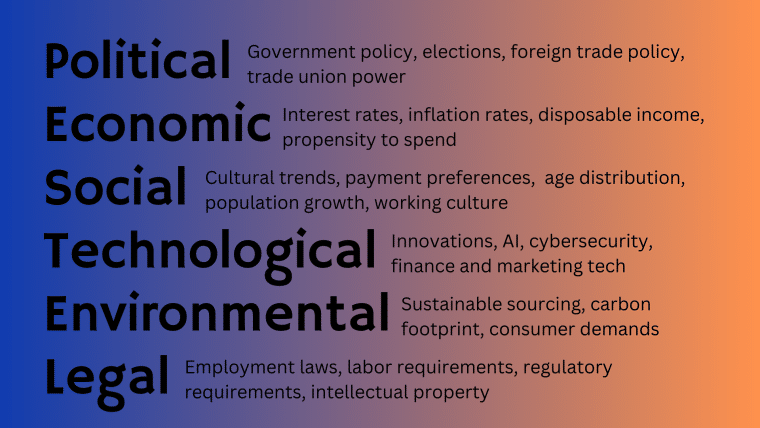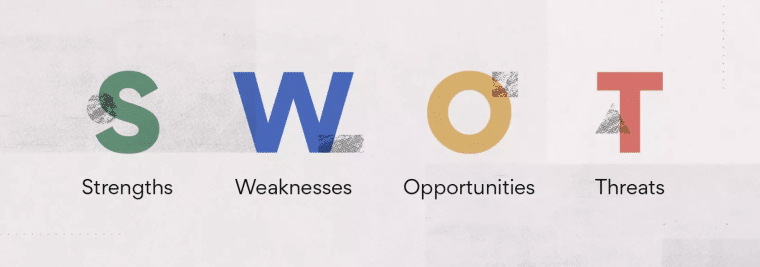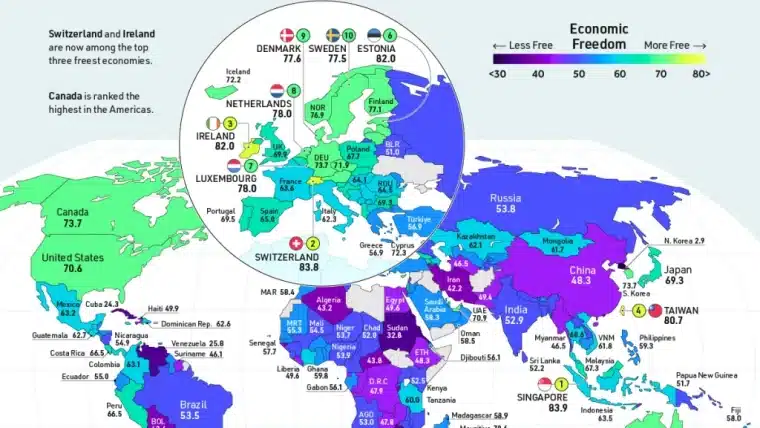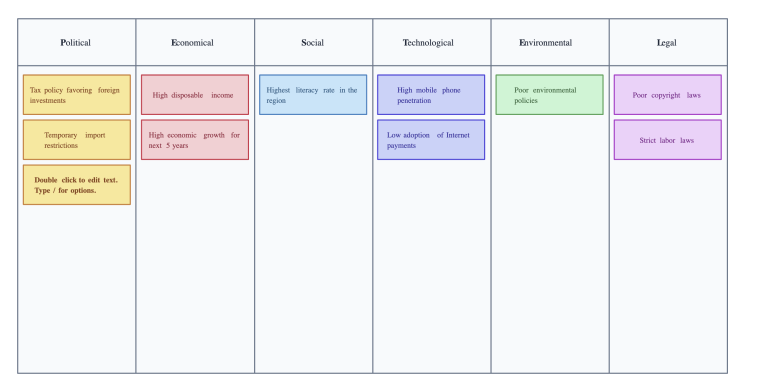A PESTEL analysis, also known as a PESTLE analysis, is a popular technique used by everyone from small businesses to large corporations to recognize potential threats and opportunities in the current business environment. Adopting this simple method can improve brand recognition, save costs, and attract top talent.
Our team of experts at Business2Community is all about delivering reliable information for your operations. In this detailed guide, we will cover everything you need to know about a PESTEL analysis and how incorporating it in your strategic planning sessions will reap greater profits.
PESTEL Analysis – Key Takeaways
- A PESTEL analysis considers 6 external factors that can influence your operations.
- Conducting the analysis helps you identify potential threats and opportunities in the current business environment.
- The analysis alone does not provide actionable plans or numbers to work with – it should always be used with other analytical tools for the best results.
What Is a PESTEL Analysis?
A PESTEL analysis is a popular research instrument used to identify favorable and unfavorable external factors in the business world. PESTEL is an acronym for the 6 factors included in the analysis, namely political, economic, social, technological, environmental, and legal.

It is different from a SWOT analysis, which focuses on the internal strengths and weaknesses of a company.
Based on the PESTEL results, you can formulate a suitable business plan to generate more profits and refine your brand image.
Who Needs to do a PESTEL Analysis?
Whether you’re an entrepreneur, a product designer, or a marketer, you need to know how to conduct and interpret a PESTEL analysis. This widely used technique dissects the impact of current external forces, giving you as a decision-maker a clearer idea of when and how to launch new products or maximize efforts.
Often, business and management consultants will house PESTEL analysis as part of their toolkit. Financial and economic analysts will also carry out PESTEL analysis to ensure assumptions within their models take external factors into account. The insights offered by PESTEL make it ideal to complete for a range of professionals.
Using this research tool gives you an advantage in preparing for the challenges and opportunities ahead. The results can facilitate innovation and save costs, allowing you to enter a new market, make an investment, introduce a new product, or pivot your business effectively.
How to Perform a PESTEL Analysis
Before you perform a PESTEL analysis, let’s take a look at the components to understand the elements we are working with. We’ve put together a list of questions under each factor to help you identify factors relevant to your field.
Political Factors
Political factors often involve the level of restrictions a government has on society. Political instability can influence certain industries more than others, such as oil and gas or ecommerce. You need to investigate how government intervention can restrict/encourage growth in your sector.
- Is political stability/instability going to persist? How will it influence your business flow?
- Will there be more trade restrictions after the next election?
- Are there politicians/senators fighting to change taxes, tariffs, or foreign trade policy? Will the changes bring more profits or harm your business?
- What other political factors are specific to your operations? E.g. climate change policy, trade union laws, etc.
Economic Factors
Economic factors can be regional or global. Stronger countries on the global stage can lead economic changes while weaker countries are more receptive to them. Study the region you are interested in to grasp the dynamics better.
- How will fluctuating interest rates affect business operations in the future?
- How is the current economic environment? Is the inflation and economic growth/decline going to continue?
- Is the general disposable income level increasing or decreasing? How about people’s willingness to purchase?
- What other economic factors are specific to your operations?
Some countries are more prone to economic problems but if your business is in a nation with a relatively high economic freedom index, it’s less likely to fall into disarray.
Social Factors
As the new generation of Millennials and Gen Z perceives work culture and ethics differently, companies need to consider these social factors so the management and marketing teams can execute business plans effectively.
- How do the current cultural trends impact buying and payment habits?
- How does the age distribution of your target markets play a role in consumer demand?
- What is the population growth rate? What will be your target population size in the next few years?
- What is the work culture and how does it affect your management team?
- What other social factors are specific to your target market?
Technological Factors
Technological advancements have smoothened the production process for many companies. However, for some businesses, there is also potential competition brought by these new technologies.
- How will technological innovation influence your production process?
- How will the new technological factors affect marketing? Is it better or worse to use AI?
- How will the new government policy on cybersecurity change your online strategies?
- What other technological factors are specific to your operations?
Environmental Factors
In this day and age, environmental factors like climate change concerns set a lot of new standards for firms to follow. Although not all of these standards are legal requirements, companies that can meet these expectations are likely to generate more sales.
- What are your carbon footprint targets for the future? Do you have enough resources for a greener production process?
- Is the government tightening environmental regulations such as the use of natural resources?
- Do you plan on taking up more corporate social responsibility like environmental offsets and Green Monday in the office? Will your target market respond positively or negatively to environmental activism?
- Can you continue to source sustainable raw materials for production?
- What other environmental factors are specific to your operations?
Legal Factors
Legal factors are extremely important. Failure to meet regulations will not only lead to negative public perception but also bring adverse legal consequences. You need to carry out relevant research before launching a new product or making changes to your brand.
- What are the employment laws in your country of interest?
- What are the labor laws and industry regulations related to your production? Do you have to provide medical benefits or extra insurance coverage?
- Will new government policies on intellectual property rights increase your production costs?
- What other legal factors are specific to your operations?
What to Do with PESTEL Analysis Results
Your PESTEL results offer a comprehensive look into the external marketing environment, pinning down areas to work on so you can brand and sell your products to reach a wider audience base.
Once you have gathered the answers to these PESTEL factors and ones specific to your business, it’s time to put together actionable plans.
Separate your answers into threats and opportunities.
When dealing with potential threats, think about how your business can come out on top. For example, you can brainstorm measures to address the growing environmental concerns, align with employees’ health consciousness levels, and gather sufficient funds to fight unstable exchange rates.
As for opportunities, you can compare various strategies and gather resources to take advantage of the growing trends. Let’s say there are favorable economic factors like increasing disposable income levels among young adults. Then, you will want to increase production on product lines targeting this age group.
The end goal of the PESTEL analysis is to identify threats and eliminate them while discovering new opportunities and exploiting them. Therefore, it is vital to compare different actionable plans so you can execute the most profitable ones.
Examples of PESTEL Analysis
The PESTEL results set the foundation for strategic planning. Using this analytical tool effectively can massively improve your company’s performance and save costs when expanding your scope of work.
To help you master this technique, here are a few real-life examples.
Opening Up an Overseas Factory
Assuming you are a toy manufacturer looking to establish another factory overseas, your PESTEL analysis can dig into environmental factors in the region of interest. You can take a look at policies targeting climate change and pollution.
As a manufacturer, you want to be branded as an ethical and sustainable company. Hence, understanding the macro-environmental factors is crucial. For example, setting up a factory in certain countries will draw backlash due to the poor environmental laws there.
Introducing a New Product
Launching a new product comes with several risks. You need to study social factors like consumer preferences and political factors.
Due to the increasing scarcity, a government may impose a ban on a specific ingredient crucial for your supply chain or packaging. The regulatory environment can change quickly and you need to gather the latest data to ensure a smooth development process.
Hiring New Team Members
A PESTEL analysis is not only useful in facilitating new launches but also incredibly handy in assisting existing businesses to expand and restructure.
When you’re hiring new team members, you can study external factors like the work expectations of the younger generations as well as new technologies on the market. This helps your human resources team to customize welfare packages that attract top talent and automate the hiring process to enhance efficiency.
How to Adjust a PESTEL Analysis
Unlike complicated quantitative analytical methods, adjusting a PESTEL analysis is quite simple. This qualitative research tool is great for the fast-paced ecommerce world because it can be adjusted anytime.
First, find the emerging external factors affecting your production. For example, taking out loans may no longer be cost-effective due to the rising interest rates. Then, you can map out other possible solutions to tackle this obstacle. Perhaps you can centralize resources to regions with lower interest rates or pay in full instead.
Updating your PESTEL results regularly is necessary, especially if the changes have adverse effects on your production. Your analysis can be a living document that you and specified people within the business can keep up to date.
Limitations of a PESTEL Analysis
Despite being a powerful tool for analyzing the state of the current physical environment, a PESTEL analysis has its limitations. You should always combine this technique with other data analytical tools for the most comprehensive results.
Some Results are Based on Assumptions
When you’re working on an analysis, you may find yourself making educated guesses quite frequently. For example, you may expect the political tension between two countries to lead to a ban on exports and imports next year.
This is merely a logical assumption that can be proven untrue later. Since the analytical tool does not quantify the uncertainty, it can be hard to judge the risks you’re taking by making these assumptions.
It Lacks Quantifiable Numbers to Work With
This qualitative analytical technique does not offer any tangible numbers to work with. While it can show you that meeting pollution targets will likely lead to more sales, it fails to show how much the revenue will increase by.
It also does not tell you about the costs involved. If the cost is significantly higher than the benefits, you may be better off shutting down the factory.
It is difficult to make informed decisions with this analysis alone. Therefore, you should adopt analytical tools like descriptive statistics and break-even analysis in your planning.
It Neglects Internal Capabilities and Threats
A PESTEL analysis neglects internal factors such as existing brand recognition and product innovation. These factors pertain to customer loyalty and should be taken into account when formulating new operational strategies.
A SWOT analysis is a fantastic tool to make up for the missing elements. It inspects your company’s inherent weaknesses and strengths to spot favorable business strategies suitable to your current capabilities.
The Value of PESTEL Analysis
A PESTEL analysis, also known as a PESTLE analysis, is a powerful method to bring forward important external factors influencing your production. It is a simple first step to start your business planning without having to deal with complicated computations.
When you use this technique together with other analytical tools, you should be able to more easily pinpoint your next profitable idea efficiently and effectively. It’s vital that you divert your valuable resources into the best opportunities and PESTEL analysis and other similar tools are excellent ways to ensure you’re making the right decisions.




